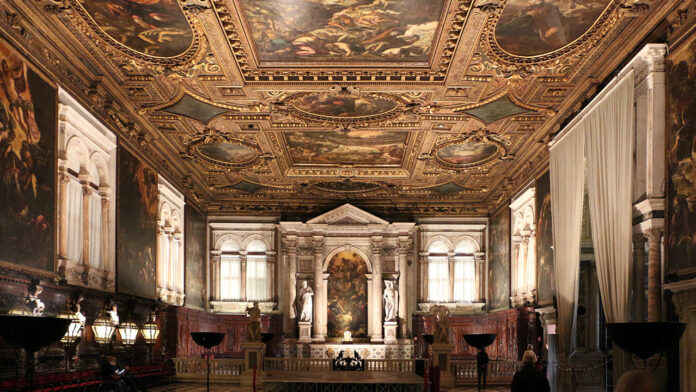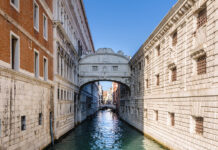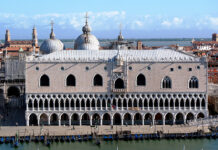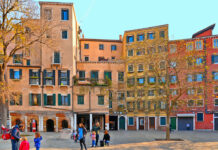Among Venice’s landmarks, buildings known as ‘Scuole’ or ‘Scuole Grandi’ might be mentioned as unmissable attractions. Between them, the Scuola Grande di San Rocco.
Among Venice’s countless art treasures, buildings known as ‘Scuole’ or ‘Scuole Grandi’ might be mentioned as unmissable attractions. It goes without saying that these are not schools in the accepted sense of the word, but one of the innumerable distinctive features of this unique city. During the ancient Republic of Venice, from the 13th century onwards, the word ‘Scuola’ was, in fact, used to describe a brotherhood, or rather an association of lay members who met to provide assistance to poor people, widows, orphans, old and sick people. The ‘Scuole’ were divided into Devotional Schools (or Scuole Grandi) which gathered for religious purposes in the name of a patron saint, Schools of Arts and Crafts and Schools of Foreign Communities (Scuole Piccole or Scuolette). Until the fall of the Republic, they represented a real kind of welfare system, initially destined for members but later extended to the entire population.
The ‘Scuole Grandi’ had countless means at their disposal, a part of which they invested to embellish their own headquarters with paintings by well-known artists including Tintoretto, Jacopo Palma il Giovane or Giambattista Tiepolo. As time passed, the most important Schools built palaces for their residents designed by famous architects and adorned them with paintings by the best artists of the era. After the fall of the Republic of Venice in 1797, the Schools were suppressed by a Napoleonic edict (1807) and within the space of a short time their assets ended up at antique markets and collections throughout the world. Several of the best-preserved Schools were reconstituted and transformed into museums that can now be visited by the public.
These include the Scuola Grande di San Rocco in the San Polo district, the richest Scuola of the city and the only one to have survived the fall of the Republic. Here, Tintoretto was engaged to decorate it with his most celebrated pictorial cycle illustrating episodes from the new and the Old Testaments and over 60 paintings are preserved in their original setting in a building that has hardly undergone any alteration since its construction. The marvellous cycle of works, created between 1564 and 1588, for its unity represents for Venice what for Rome is the Sistine Chapel. The School is located next to the Church of San Rocco, a saint to whom the city of Venice voted to ask for grace during the great plague epidemics of the 14th century.











